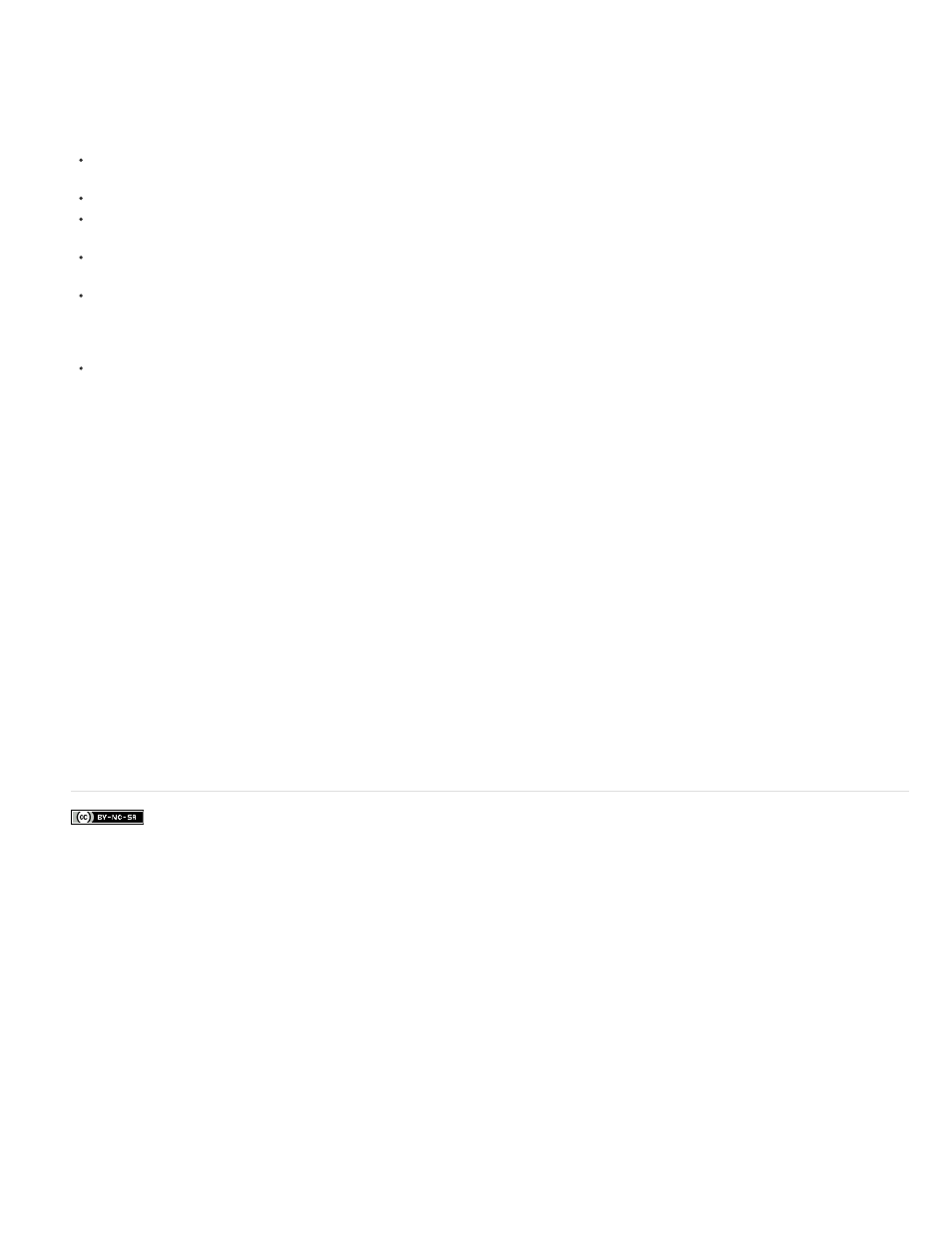Send an edl to speedgrade – Adobe Premiere Pro CC v.7.xx User Manual
Page 557

Facebook posts are not covered under the terms of Creative Commons.
Note:
For more information on the editing and grading workflow between SpeedGrade and Premiere Pro,
Important notes
Send to SpeedGrade exports a SpeedGrade project file (.ircp) and a series of DPX sequences in folders, representing segments in the
Premiere sequence, with no "handles".
For cuts-only edits, each clip is sent as a separate DPX sequence.
For clips with transitions, the portion of the clip without the transition is sent as a DPX sequence, and the portion with the transition is sent as
a separate DPX sequence.
Similarly, composited segments are flattened and sent as separate DPX segments. Individual clips can also be selected in the Project panel
and sent to SpeedGrade, where they are converted into a single DPX segment.
Each DPX segment is packaged into a separate folder, labeled with the sequence timecode of the first frame of that segment, along with the
clip name. This makes it easier to locate specific shots within the Premiere sequence, as they can be sorted to match the order they appear
in the sequence. In addition to the Media folder and the .ircp project file, a .wav file is exported of the entire sequences audio for a reference
soundtrack. For individual clips, the media source timecode is used.
When the SpeedGrade .ircp project file is opened in SpeedGrade, SpeedGrade opens the sequence (or the individual clip) in its timeline,
ready for grading.
For interlaced source media, Premiere Pro sends both fields as separate frames to SpeedGrade, so a 29.97 source would be sent as a
59.94 frames per second project.
Send an EDL to SpeedGrade
Instead of sending a sequence to SpeedGrade and creating additional DPX files, you can link to your original sequence via exporting an EDL from
Premiere Pro, and then importing it into SpeedGrade. To do so, follow these steps:
1. In Premiere Pro, select the sequence in the Project panel or the Timeline.
2. Choose File > Export > EDL
3. Make adjustments to the EDL, choose a name, and destination, and then click OK. A CMX 3600 style EDL is created.
4. In SpeedGrade, refresh the desktop, and then navigate to the EDL.
5. Click the EDL. The edits are loaded into SpeedGrade.
6. In the Reels section, you see the offline clips.
7. In the sidebar, locate the original files.
8. Choose > Sequences from folder and sub-tree from the Sequence Folder View menu. The material from the media folder appears.
9. In the Reels section, click the Load from Desktop button. SpeedGrade conforms the material based on the information from the EDL.
560